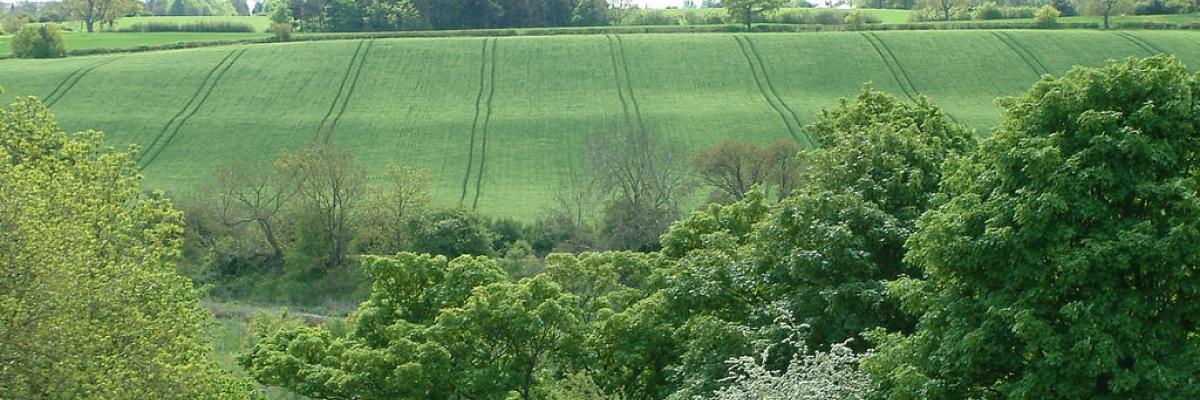

The role of trees in arable farming
Integrating trees into farming systems - Practical Guidance
Download the PDF
Integrating trees into arable farming systems can improve productivity, product diversity, resilience, save costs, and offer wider environmental benefits. This guide reviews the role of trees and hedges in relation to drought and water conservation, soil management and erosion, mitigating pollution, crop pollination, and environmental benefits of offsetting carbon emissions, wildlife conservation, and providing wood fuel and habitat for game. It includes an introduction to silvoarable agroforestry systems and managing and planting shelterbelts, riparian strips and hedges. The guide includes two farm case studies. The first is of Whitehall Farm in Cambridgeshire, where Stephen Briggs integrated apple trees into his wheat, barley, clover and vegetable-producing business to reduce wind erosion, enhance biodiversity, combine perennial and annual crops, and diversify his crops. The second is of Haywood Oaks Farm in Nottinghamshire, where hedgerows and shelterbelts have been incorporated to help combat loss of valuable topsoil through water and wind erosion.
- Integrating native trees, woodland and hedgerows into arable farming systems can provide environmental and economic benefits.
- In-field shelterbelts reduce wind speeds and therefore also reduce evapotranspiration from crops and mechanical damage to crops.
- Strategically planting trees can help prevent topsoil erosion caused by wind and water.
- Shelterbelts, riparian planting and buffer strips can enhance water infiltration rates, reduce surface run-off and help prevent nutrients and pollutants from entering watercourses.
- Trees can provide resources for pollinators; important over-winter refuges, nesting sites and pollen and nectar feeding sources. Shelterbelts can act as ‘highways’ for the movement of bees, hoverflies and other pollinators.
- Using productive trees in rows within an arable system can increase the farmed area both above and below ground and benefit crops grown between the trees by reducing soil degradation, improving water efficiency and enhancing pest and disease control.
- When designing shelterbelts and agroforestry alley cropping systems, there are a number of practical factors you need to consider such as intended use, number of years to tree maturity, tree row orientation, sensitivity of arable crops to competition and shade, likely wind speed and direction, soil type, and farm layout.
